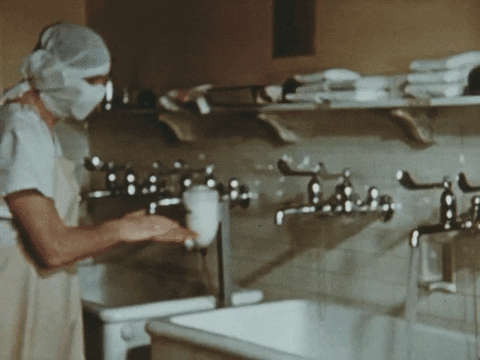1.The quickest labor ever — or surely pretty close to it — was only two minutes long!
https://instagram.com/p/BzaO2YAlJNJ/
Australian mom Mary Gorgens, who has been dubbed “the Queen of Fast Labors,” got up to use the bathroom when she suddenly felt her son’s head crowning. Two minutes later, he was born!
While this was her fastest delivery, it wasn’t an entirely new experience for her — she’s delivered five other children, and never labored longer than two hours. In fact, three of them each took less than 15 minutes!
2.On the other end of the spectrum, the longest labor lasted a whopping 75 days.
This one needs a little explaining: In 2012 a Polish mother, Joanna Krzysztonek, was pregnant with triplets when one of the triplets was born prematurely and died during the fifth month of the pregnancy. That, according to doctors, was the official start of Krzysztonek’s labor, but to give the other two babies a chance at survival, Krzysztonek was put on bed rest with her feet above her head (to reduce pressure on the cervix).
It worked, and 75 days later twins Iga and Ignacy were born at 32 weeks.
3.On average, though, new mothers labor around six and a half hours while moms who have previously given birth labor 1-2 hours less.
A French study found that it happens less than 1% of the time, so it’s not all that common. Nevertheless, it can be triggered by, among other things, the increased hormones during pregnancy.
6.You’ve probably heard the Netherlands referred to as “the home birth capital of Europe,” but home births there have been seriously on the decline, tumbling from 70% in 1970, 30% in the year 2005, to about 13% today.
https://instagram.com/p/B1Jbdu2priQ/
Desire for a safer delivery — and the ability to get pain management — have played a role in this cultural shift.
7.Managing pain during childbirth was largely taboo until Queen Victoria inhaled chloroform while giving birth to her eighth child, Prince Leopold, in 1853.
They also ate special foods and acquired amulets said to help keep them safe.
10.Today giving birth is much, much safer, but it’s not without risk — and more women in the United States die in childbirth than in other wealthy nations.
According to a multi-national study by the Commonwealth Fund, America had the highest death rate out of 11 first-world countries, seeing 14 women die every 100,000 births. Sweden had the lowest rate with 4 maternal deaths per 100,000 births.
11.In 19th century Austria, 25-30% of women who gave birth in hospitals died of infections until a doctor, Ignaz Semmelweis, realized it was because student doctors were going from the dissecting room (dealing with cadavers) directly to the maternity ward WITHOUT WASHING THEIR HANDS.
Semmelweis made the student doctors wash their hands in a solution of chlorinated lime before each exam, and the death rate dropped dramatically. Semmelweis’ discovery is a big reason hand washing is now commonplace in hospitals.
12.In the Middle Ages women in labor were expected to make cakes — called “groaning cakes,” likely because the women groaned while making them.
https://instagram.com/p/BY_pfB9g5tS/
These cakes were to be given to the women’s guests, but they were also thought to help speed along the birthing process.
(And, as you can see from the Instagram above, some woman still bake groaning cakes while in early labor.)
13.Water births may be thousands of years old — Egyptian pharaohs were said to have been born in shallow water — but the first water birth on record in modern times happened in France in 1805.
A mother had labored so long and with such difficulty that she was put into a warm bath. Once submerged her labor accelerated, she started to push, and her baby was born in the water.
14.Lastly, some women give birth to babies STILL INSIDE THE AMNIOTIC SAC. These are called “en caul births.” You can see an Instagram video of one here, but if you’re squeamish you might want to skip it because it’ll definitely have you like:
Source: Read Full Article







